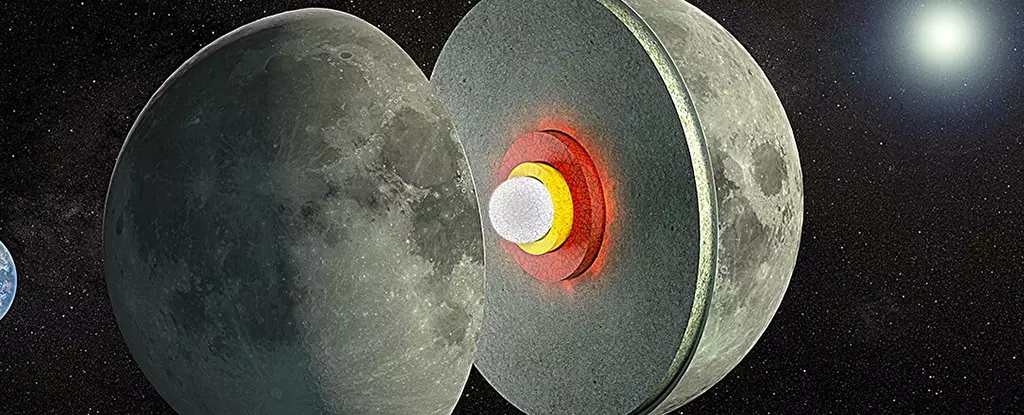The exploration of the Moon’s geological composition has long fascinated scientists, as its mysteries hold vital clues to our solar system’s history. A significant revelation is emerging regarding a partially molten layer residing beneath the Moon’s hardened exterior. Recent studies, conducted by a formidable collaboration between NASA’s Goddard Space Flight Center and the University of Arizona, draw attention to the intricacies of the Moon’s inner structure. Their findings suggest that the Moon’s mantle is not entirely solid, but rather harbors a viscous zone that fluctuates in response to gravitational influences.
The gravitational interactions between the Earth, the Moon, and the Sun generate complex tidal forces that profoundly affect the lunar terrain. These tides are not merely limited to surface water, as one might assume, but extend to the Moon’s physical dimensions and gravitational field. The research team employed advanced data from NASA’s Gravity Recovery and Interior Laboratory (GRAIL) and the Lunar Reconnaissance Orbiter. Through analyzing lunar gravitational shifts over time, they made groundbreaking strides towards comprehending the Moon’s internal mechanics. Such tidal variations were previously obscure, but new methods allowed for unprecedented insights into how the Moon’s shape and composition respond to gravitational pulls.
The heart of this research lies in the development of computer models that attempt to replicate the Moon’s physical state beneath its crust. The analysis indicates that beneath the solid mantle, there exists a low-viscosity zone (LVZ) that expands and contracts similar to oceanic tides. According to the researchers, the physical characteristics of this lower mantle layer can only be reconciled with a gooey subsurface, raising essential questions about its origin and maintenance. The steady-state temperature necessary for sustaining such a molten zone invites scientific inquiry into the Moon’s thermal dynamics.
An intriguing aspect of the research involves the mineral composition of this LVZ. The team posited that a mineral called ilmenite, rich in titanium-iron oxide, might play a crucial role in maintaining the layer’s molten state. This scenario mirrors geological assessments on Mars, where similar evidence of partial melting was suggested through seismic data analysis. Such connections broaden the scope of comparative planetology, emphasizing potential similarities across different celestial bodies.
Understanding the Moon’s internal structure bears significant implications for future lunar exploration. The researchers assert that if we are to establish a sustained human presence on the Moon, seismic equipment stationed on its surface could elucidate further details about its interior composition. Prospective discoveries could unlock vital information about not only the Moon’s own evolution but also its formative processes relative to Earth and Mars. The insights gained may help us grasp the thermal evolution of planetary bodies, enhancing our understanding of both their geological history and their potential for hosting life.
The study’s revelations prompt a paradigm shift in how we view the Moon’s geology. As researchers peel back the layers of its complex structure, the notion of a viscous, partially molten zone beneath the surface transforms our conception of lunar evolution. The Moon, once thought of solely as a terrestrial satellite, now reveals itself as an enigma worthy of further investigation. As future missions seek to unearth answers, the Moon’s hidden stories may soon be told, enriching our understanding of planetary processes and fostering aspirations of deeper space exploration. Scientists stand on the cusp of new discoveries that could redefine our relationship with the Moon and our place in the cosmos.


Leave a Reply